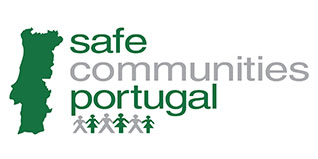The Minister of Internal Affairs, Eduardo Cabrita, said that the Single Prevention and Combat Directive, approved by a resolution of the Council of Ministers, “establishes the structural transformation mechanisms of the forest fire defence system”.
At the press conference after the meeting of the Council of Ministers in Lisbon, Eduardo Cabrita said that the Directive follows the lessons learned “from the events that took place between June and October, and from the conclusions of the report of the Independent Technical Commission”.
The statement of the Council of Ministers states that the directive approves “for the first time and in an integrated way, the responsibilities of the various participants in the system, improving flexibility and coordination between them, from the planning stage, through prevention to the suppression of rural fires’.
The Minister said that the directive “clearly characterizes” the level and form of intervention of the various public entities, private entities and civil society that have a responsibility in the prevention and combat effort at all stages.
Eduardo Cabrita stressed that “this is the first time that there is an instrument of this nature”, which compromises all areas of the Government that “corresponds to one of the main objectives of the forest defence reform, which is, the approximation of prevention and combat”
The instrument also provides “the basis that in a few weeks, the National Civil Protection Authority and the Institute of Nature Conservation and Forests can define their directives in their own areas of intervention.
Importance of prevention
The Minister of Home Affairs stressed that “the highest priority at the moment is awareness-raising for prevention” and stated that there are “exceptional instruments enshrined in the State Budget with mechanisms that link individuals, public companies, the entire public sector and local authorities”.
Eduardo Cabrita highlighted the need to clean up the forest by the end of May, anticipating the greatest risk, and stated that the 19 most risky areas are identified and involve municipalities, parishes and villages.
The effort to focus on prevention by the end of May will enable “reinforced means to prepare and program the fight and prepare the transition to a different model that will allow for more preparedness in the forest area”.
The Single Prevention and Combat Directive and the organic one of the Agency for the Integrated Management of Rural Fire, were the two diplomas approved in the meeting of the Council of Ministers and “come to consolidate the strategy of defence of the forest and fire prevention and firefighting, concretizing the measures decided in the Resolution of the Council of Ministers of 21st October 2017
The Council of Ministers also approved the creation of the Agency for the Intergrated Management of Rural Fires.
Flexible Endowment Facility
The Minister for Home Affairs stated that the State Budget provides for a flexible allocation of € 200 million, which allows for all forms of strengthening of means in the various areas of prevention and combat.
“The reinforcement of 500 units of the Intervention, Protection and Relief Groups [of the GNR] is already under preparation, allowing them to operate throughout the national territory; a reinforcement of 100 elements of the Nature and Environment Protection Service, “he said, adding that the tender was launched for the formation of 100 teams of forest sappers, involving 500 new forest sappers.
Eduardo Cabrita also said that the priorities of 40 teams of permanent intervention with the Portuguese Firemen’s League are being discussed.
In addition to reinforcing human resources, there will also be reinforcement of support structures, whether through personal protection equipment, vehicles, mechanisms of first combat or extended combat.
“The priority is to clear the bush by May 2018. For this, the State Budget has created quick intervention mechanisms, through the waiver of public tender or the approval of the Court of Auditors for the contracting of public entities to build strips of primary or secondary protection and the creation of 500 kms of new protection strips, “he added.
There will also be a credit line of 15 million euros for private entities to take responsibility for cleaning up the areas under their jurisdiction and another for 50 million euros for municipalities to clean up against the non-compliance of individuals.
“We will not stop doing everything so that in the field of prevention, and in preparation for the best fight, this year we will do everything that is necessary so that nothing is as before,” he said.
